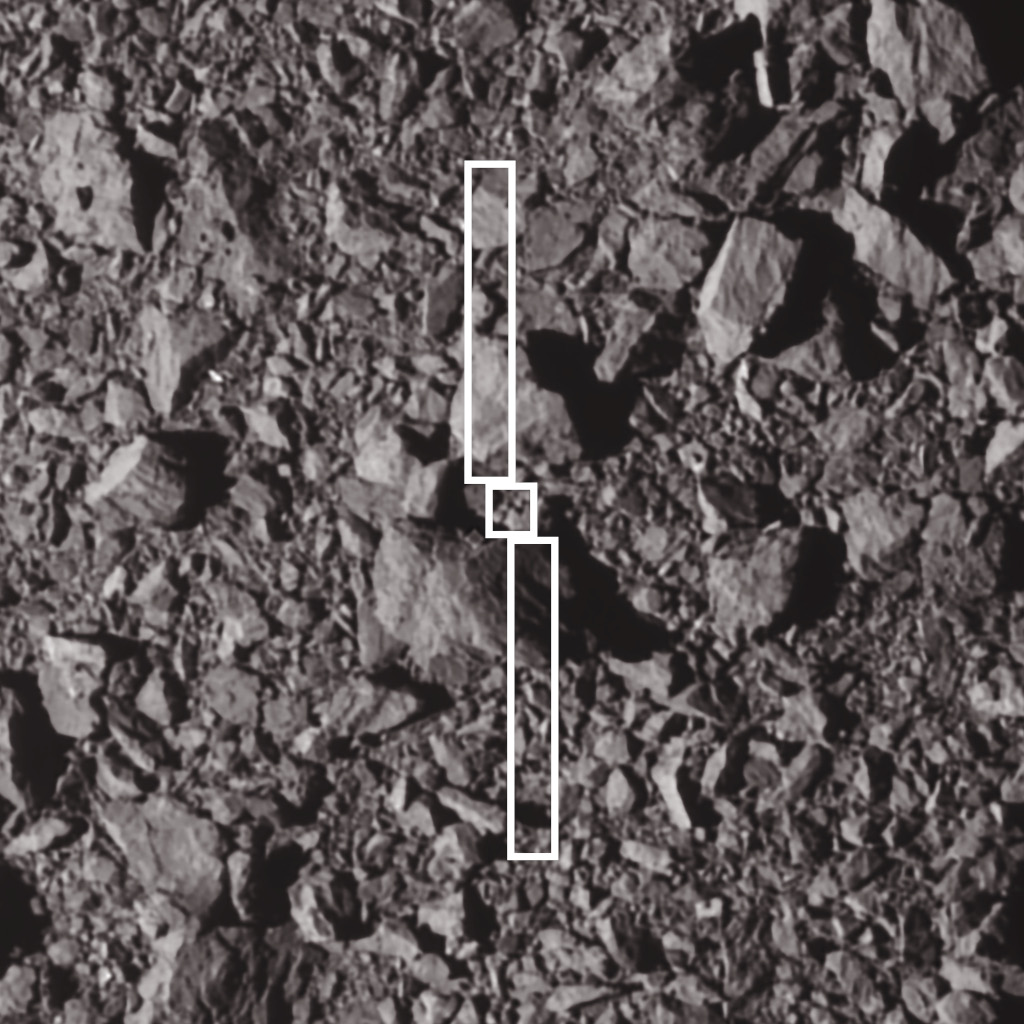2023年3月9日
DART vs Dimorphos
Image Credit: NASA, Johns Hopkins APL, DART
Explanation: On the first planetary defense test mission from planet Earth, the DART spacecraft captured this close-up on 26 September 2022, three seconds before slamming into the surface of asteroid moonlet Dimorphos. The spacecraft’s outline with two long solar panels is traced at its projected point of impact between two boulders. The larger boulder is about 6.5 meters across. While the DART (Double Asteroid Redirection Test) spacecraft had a mass of some 570 kilograms, the estimated mass of Dimorphos, the smaller member of a near-Earth binary asteroid system, was about 5 billion kilograms. The direct kinetic impact of the spacecraft measurably altered the speed of Dimorphos by a fraction of a percent, reducing its 12 hour orbital period around its larger companion asteroid 65803 Didymos by about 33 minutes. Beyond successfully demonstrating a technique to change an asteroid’s orbit that can prevent future asteroid strikes on planet Earth, the planetary-scale impact experiment has given the 150-meter-sized Dimorphos a comet-like tail of material.
Tomorrow’s picture: a great nebula
DART航天器与双卫一
图像提供: NASA, Johns Hopkins APL, DART
说明: 在来自地球的首次行星防御测试任务里,DART航天器于2022年9月26日拍下了这张特写图像,紧接着在3秒之后撞击小行星双卫一(Dimorphos)的表面。上图另以位在2块巨石之间的预计撞击点为基准,绘出了这艘航天器的轮廓及它的2扇长太阳能板。二块巨石之较大者宽约约6.5米。虽然DART(双小行星重定向测试)航天器的质量约有570公斤,但这个近地双小行星系统中较小的成员双卫一之推估质量约为50亿公斤。DART航天器的直接撞击,让双卫一的速度改变了不到百分之一,但是将其绕行较大的伙伴─小行星双生星(65803 Didymos)的12小时轨道周期,缩短了约33分钟。除了成功展示可改变小行星轨道的技术、以防止小行星未来撞击地球之外,这次的行星规模撞击实验,还让150公尺大小的双卫一形成了彗星状的物质长尾。
明日的图片: a great nebula







